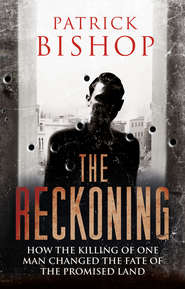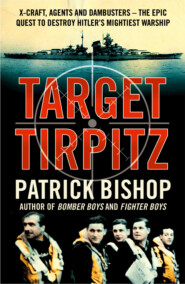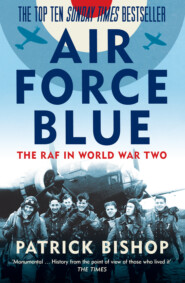По всем вопросам обращайтесь на: info@litportal.ru
(©) 2003-2024.
✖
Bomber Boys
Автор
Год написания книги
2019
Настройки чтения
Размер шрифта
Высота строк
Поля
Much of the alarm had been generated by the man who was regarded by both politicians and the public as the country’s greatest authority on air war. Hugh Trenchard had risen to be head of the Royal Air Force during the First World War. He was known as ‘Boom’ to his colleagues, a reference to his foghorn voice. They regarded him and his utterances with what now seems like extraordinary reverence. ‘What a character he is!’ declared Sir John Slessor, one of his many disciples and a wartime bomber group commander. ‘The enormous lanky figure; the absent-minded manner, shot with sudden flashes of shrewd and humorous insight; the illegible handwriting; the inarticulate speech – always a lap or two behind his racing brain; his wonderful capacity for getting people’s names mixed up. Boom was a constant source of joy to those who were lucky enough to serve under him.’
Lord Trenchard, as he became, was forceful and confident and contemptuous of ideas that were not his own. He had been head of the first separate bombing force, created in 1918 to repay the Germans for having bombed England. He had started out, though, as a doubter, sceptical of what aircraft could achieve on their own. His conversion to the value of strategic bombing, when it came, was absolute. Through the Twenties and Thirties he became the foremost advocate of using aeroplanes to smash the enemy into submission on their own territory. He was to exercise a powerful influence over RAF and government policy right into the early years of the war, with dogmatic assertions which were seldom backed up by data.
An early and often-repeated dictum was that ‘the moral effect of bombing industrial towns may be great, even if the material effect is, in fact, small.’ Later he refined this into the doctrine that ‘the moral effect of bombing stands undoubtedly to the material effect in a proportion of 20 to 1’, an observation that had no basis in measurable fact. After the slaughter of 1914–18, the prospect of any war, let alone one that promised annihilation of civilians from the air, was horrifying to governments and populations alike. In the pre-Hitler years there were several international attempts to outlaw the bomber: at Washington in 1922, The Hague in 1923 and Geneva in 1932. They all ended in failure, undermined by pessimism, cynicism and the impossibility of uninventing the machine that defined the century.
Britain had been at the forefront of attempts to ban the bomber and had held back from spending on the development and production of bomber aircraft in the hope that they would not be needed. The rapid rearmament of Nazi Germany after Hitler’s victory in 1933 forced the abandonment of this policy and the start of a scramble for military parity.
The hope was that a sizeable bomber fleet might deter a German attack. If not, it would provide the means, and given Britain’s geographical position and dearth of soldiers, the sole means of striking back if Germany dared to attempt an aerial ‘knock-out blow’ at the start of hostilities.
By the end of the First World War, Britain was already committed to a policy of strategic bombing. The main work of the air force between 1914 and 1918 had been tactical: to support the army, flying reconnaissance missions, spotting the fall of artillery shells and attacking German soldiers in the field. Later, bigger aeroplanes and heavier bomb loads raised the possibility that the air force could play a strategic role in defeating the enemy, by attacking the factories and foundries and power plants that turned the engines of modern industrial war.
The possession of a long-range bombing fleet suited British needs. A Continental power like Nazi Germany saw aeroplanes largely as an adjunct to its land forces who would carry out the main work of conquest. This was reflected in its choice of versatile, medium-sized aircraft which could blaze a trail of destruction to clear the path for its advancing armies, as well as carrying out conventional bombing.
Britain’s case was very different. It had no plans to invade anyone and saw air power chiefly as a means of defence – but a defence founded on aggression. Trenchard had stimulated the offensive spirit among his pilots on the Western Front, rarely flinching from the losses that that policy inevitably entailed.
Some in the RAF argued that Germany could be defeated by bombing alone. That was always an extreme view. However everyone, including the chiefs of the other services, agreed that the air force had a major role to play in destroying Germany’s war industry, demoralizing its population, and preparing the ground for the army to finish the job.
This was the essence of strategic bombing, and in the interwar years it was the RAF’s ability to wage a strategic bombing campaign that provided the chief justification for its existence. Everything was geared to attack, with only minor consideration given to the defensive role of aircraft. Bombers outnumbered fighters by about two to one through the period. There was a brief, fortuitous diversion from this path in 1937 when the Air Staff was forced to accept the argument of Sir Thomas Inskip, brought in as Minister for the Co-ordination of Defence, that Britain needed a strengthened fighter force to ward off the immediate threat from the German air force. But the RAF’s resultant triumph in the summer of 1940, when the Battle of Britain swirled in the sky over southern England, did nothing to subvert the doctrinal orthodoxy that it was attacks that won wars.
Despite this preoccupation, the RAF started the war with a bomber fleet that was totally inadequate to carry out its own stated aims. The machines of the early Thirties were ungainly and saddled with uninspiring names. The Boulton Paul Overstrand, the Fairey Hendon and the Handley Page Harrow did not sound likely to strike fear into the enemy. They were stop-gaps, filling the ranks until the arrival of the new generation of aircraft. The programme to re-equip with giant, four-engined aircraft, which eventually produced the Stirling, Halifax and Lancaster, was launched in 1936, but it took until 1942 for them to start arriving on the squadrons. Bomber Command’s heaviest bombers at the start of the war were two-engined Wellingtons, Hampdens and Whitleys, which were reasonably advanced for the time but plainly insufficient for the task that the air force had set itself.
The RAF’s blueprint for waging war was contained in the Western Air Plans, first drawn up in 1936. They rested on the belief that bombers could find and destroy the factories, oil installations, roads and railways that were the object of a strategic force’s attentions. This was to turn out to be a hugely mistaken assumption.
The plans supposed that Germany would start the war either by attacking Belgium and France or by launching an all-out bombing campaign on Britain. In the first case, Bomber Command was to attempt to slow down the advance of the German army by striking its supply lines. In the second, it was to reduce the power of the Luftwaffe assault by attacking aerodromes and other aviation targets. At the same time, the Air Staff who directed the command’s efforts were also eager to disrupt the enemy’s supply of oil. The dream of bringing the German military to a halt by starving it of fuel would persist to the last days of the war.
In the event the Germans took their time digesting their prey before raising their eyes hungrily westwards. Britain did little to provoke them. Until the invasion of Norway in April 1940, the RAF confined itself to intermittent raids on shipping and leaflet-dropping sorties over Germany and the conquered territories. This was partly a reflection of the scrupulousness that was Britain’s official policy. Thirty months before the start of the war Prime Minister Neville Chamberlain announced to the House of Commons that Britain would only bomb purely military objectives and take every measure to avoid civilian casualties. A few days after it began, the RAF’s Director of Plans, Air Commodore Sir John Slessor, promised that ‘indiscriminate attack on civilian populations as such will never form part of our policy’.
But the caution was also a reflection of reality. The air force was weak and inadequately equipped and in no position to risk its men and machines unnecessarily. The phoney war period provided Bomber Command with a desperately needed space in which to measure its capabilities and build up its strength. The propaganda leaflet drops, which look faintly ludicrous to modern eyes, may have done little to subvert the Nazi regime but they served another useful purpose. They provided crews with crucial experience of night flying over enemy territory, at very little cost.
Night flying, it was to turn out, was a vital skill. The first lesson the RAF learned when tested by wartime conditions was a painful one. The prevailing wisdom was that bombers, if they held to a tight formation, could defend themselves in daylight from attack by German fighters. So great was the faith in this belief that only five of the thirty-three operational squadrons had received any training in flying in the dark.
The theory was thrown into doubt from the beginning. German fighters, directed by radar, savaged the bombers sent off on shipping searches over the North Sea. In two attacks on 14 and 18 December, half of the thirty-four Wellingtons dispatched were destroyed. The myth of the self-defending daylight bombing formation lingered on until the spring when it was demolished by another punishing encounter with reality. Following the German invasion of Norway and Denmark in early April 1940, Bomber Command was ordered to disrupt the advance. On 12 April, nine Hampdens and Wellingtons out of a force of sixty were shot down by fighters while trying to bomb shipping in the Stavanger area. It was the last appearance of the two types in daylight operations. Henceforth bombing at night-time would become the norm for these aircraft and the heavier ones that succeeded them.
Britain held back from launching attacks near population centres for as long as it could. With the German invasion of the Low Countries on 10 May 1940 and the Battle of France that followed, restraint was gradually abandoned. Everyone knew that sooner or later civilians would be killed. The only question was how many. In the early months of the war the Germans had been as anxious as the British not to take innocent lives, fearing it would provoke a retaliation that would make the negotiated settlement that Hitler desired more difficult. But it had happened nonetheless.
At dusk on 16 March 1940, at the hour the locals call the ‘grimling’, a 27-year-old Orkney Islands farmer called James Isbister heard the sound of aircraft. He left his wife and three-month-old son and went to his cottage door to look. Silhouetted against the northern sky were the broad wings and slender bodies of a fleet of four Heinkel bombers. They seemed to be heading for Scapa Flow, a sheet of sheltered sea, surrounded by low hills, where warships of the British fleet were anchored. As the aircraft closed on the fleet other shapes appeared in the sky. A cluster of small, dartlike machines hovered above the bombers before swooping down among them. What looked like blue electric sparks glittered from under their wings and stitched across the sky. The RAF had arrived. The German formation that had looked so sure of itself held firm for a moment, then wavered and broke. The bombers lunged in all directions, desperate to shed their loads and head for home. One came directly towards Mr Isbister. It flew very low, near enough for him to have been able to notice the camouflage of the fuselage, grey-green like the scales of a pike, and its pale belly and glass snout. On the underside, where the wings met the body, were two cross-hatched panels. They swung open and dark shapes tumbled out. The bombs fell in a stick, sending up fountains of dirt. The shrapnel left a pretty starburst shape in the turf. James Isbister was caught in the blast and earned the sad distinction of becoming the first civilian to be killed by Germans in the British Isles in the Second World War. The following day the people from round about went to survey the damage. Among them was the poet George Mackay Brown. ‘We felt then a quickening of the blood, a wonderment and excitement touched by fear,’ he remembered. ‘The war was real right enough and it had come to us.’
When the German army began its great surge westwards, the RAF at last moved to put its war plans into action. Bomber Command had been engaged from the beginning in trying to stem the flow of armour as it flooded into Belgium, Holland and France, bombing bridges and communications and suffering terrible punishment from mobile flak batteries and fighters in the process.
Initially raids were restricted to targets west of the Rhine. On the night of 11/12 May, an attack was launched on Mönchengladbach, the first on a German town. The thirty-seven aircraft that took part were aiming for road and rail junctions but bombs fell among houses and blocks of flats. They killed three Germans: Carl Lichtschlag, sixty-two, Erika Müllers, twenty-two, and a two-year-old girl called Ingeborg Schley. The dead also included a British citizen. Ella Ida Clegg had been born fifty-three years before to a British father who left Oldham to work as a factory foreman in the Rhineland. Nothing else is known about her. She was listed in official records simply as a ‘volunteer’.
She will be remembered only as one of the first batch of civilians to die in the air war in Germany. These first corpses had names, but that did not last long. Such tragedies soon became commonplace as aerial war dragged ordinary people on to the battlefield and names gave way to numbers.
Four days later Bomber Command visited for the first time a target to which it would return over and over again in the years ahead. Nearly a hundred aircraft set off to attack sixteen different oil and rail targets in the Ruhr, the smoky, densely-populated agglomeration of steel and coal cities clustered along the Rhine river system, which was the heart of Germany’s war industry.
It was a puny raid by the standards of what was to come, but it was later counted by Bomber Command’s official historians as the first action of the strategic air campaign. The targets included factories in Dortmund, Sterkrade, Castrop-Rauxel and Cologne. One bomb, aimed at the IG-Werk at Dormagen, landed on a farm and killed Franz Romeike, a dairyman. Local rumour had it that he had switched on a light on his way to the lavatory and attracted the attention of a bomb-aimer. The story revealed an exaggerated notion of the accuracy of bombing, but an entirely realistic understanding of how randomly death could arrive in an air raid.
By attacking industry and communications, Bomber Command was fulfilling its raison d’être but the events of the rest of the summer meant it was deflected from concentrating on this activity. In July, having swallowed France, Germany turned its attention to Britain, launching the Luftwaffe across the Channel in an attempt to clear the skies for a possible invasion. Bomber Command was ordered to weaken the enemy’s air strength at its source by destroying aluminium plants, airframe factories and stores. It was also tasked with attacking airfields and sinking the barges appearing in the North Sea waterways to carry the invasion troops. On top of all this, it was expected to continue hitting oil, communications and industrial targets when it could.
The weight of Bomber Command’s duties meant there was no concentration of effort and the effects of their bombing, apart from on troop transports, were negligible. Nonetheless, throughout the summer the Air Ministry showered its commander-in-chief, Sir Charles Portal, with directives. Portal was a realist and a sceptic, whose perfect manners and quiet demeanour hid a mind that was as cool and hard as marble. It was he, as much as anyone, who led Bomber Command away from its pursuit of a precision that was, initially at least, unattainable, and towards a policy of annihilation. Portal queried, in his courteous but firm fashion, the wisdom of attacking the German aircraft industry. Many of the targets were sited in remote areas. He pointed out that ‘the very high percentage of bombs which inevitably miss the actual target will hit nothing else of importance and do no damage and the minimum amount of dislocation and disturbance will be caused by the operations as a whole.’ He also advocated that when initial targets could not be reached because of bad weather, aircraft should be free to dump bombs on alternatives, thus increasing ‘the moral effect of our operations by the alarm and disturbance created over the wider area’.
With these observations, which caused some surprise and concern at the ministry, Portal opened the way to a crucial shift in bombing policy. In his view, any damage was better than none and undermining morale, the moral effect in the language of the day, was a very important and desirable product of aerial bombardment. The Air Staff felt the need to sound a cautionary note. It felt that ‘moral effect, although an extremely important subsidiary result of air bombardment, cannot in itself be decisive’.
For the time being, at least, it maintained its faith in what it believed were selective, precise attacks.
Portal was being indiscreet in advocating so frankly the spreading of panic. But he was stating a belief that had been accepted inside the air force from the earliest days. Despite undertaking that the RAF would not attack the civilian population as such, it was understood that any attack on land-based strategic targets would result in civilians dying. Trenchard’s independent force had killed 746 innocent Germans in the 242 raids it mounted in the six months of its existence.
Few moral contortions were necessary to justify certain civilian deaths. Many took the view that the factory worker manufacturing shells was as lawful a target as the artilleryman firing them. The killing of women and children naturally caused revulsion. But at the same time it was widely accepted that all bloodshed, or the threat of it, had beneficial results in lowering enemy spirits and undermining the will to sustain the war effort. This was no more than a reflection of Trenchard’s dictum that the moral effect of bombing was twenty times that of the material effect. The question was, as the Air Ministry reply made clear, whether the issue of morale could be decisive. And if it could, should morale itself be a primary target of strategic bombing?
The first reports filtering out of Germany suggested that this might be the case. Germans had been led to believe that they would be largely untroubled by air attack, and very well protected if any should occur. The thin evidence available, from neutral journalists and diplomats and a handful of spies, spoke of shock and dismay among ordinary citizens that the war had entered their towns.
Meagre though this testimony was, it reinforced the conviction in some quarters that German nerves were weaker than those of the British. This was Trenchard’s belief. It was not Churchill’s, who in October 1917, when calls for revenge for the German air raids were at their loudest, had dismissed the idea that a response in kind could produce a German surrender. ‘Nothing that we have learned of the capacity of the German population to endure suffering justifies us in assuming that they could be cowed into submission by such methods,’ he wrote.
Even if the Germans’ pluck was suspect, it was questionable whether this would produce any immediate advantage for Britain and its allies. An influential subcommittee reporting to the Chiefs of Staff had pointed out with some understatement three years before the outbreak of war that ‘a military dictatorship is likely to be less susceptible to popular outcry than a democratic government’.
This was only common sense, but it was to be very often forgotten or ignored.
The Battle of Britain and the Blitz provided the great test of British morale. In the first two months of the air war, 1,333 people were killed as German bombs missed their targets or were scattered at random when the raiders headed for home. On the night of 24 August the first bombs fell on central London and a fortnight later it experienced its first heavy bombardment. That month 6,954 civilians were killed all over Britain, and a further 6,334 in October. This was death on a hideously larger scale than had been endured in the previous war.
In the capital, the bombs were ostensibly aimed at docks, railways and other locations with an arguable military or war-industrial value. In practice they landed everywhere. They fell on Westminster Abbey, St Paul’s Cathedral, Kensington Palace, Lambeth Palace and Buckingham Palace, twice. They hit hospitals and theatres, the London Zoo and Madame Tussaud’s. They crashed down on rich and poor alike, the brick terraces of the East End and the stucco squares of Kensington and Mayfair. But the great sprawl of London meant that the violence lacked concentration. As one part of the city was ‘getting it bad’ another was having a relatively quiet night. The capital adjusted quickly to death from the air. The damage was spectacular but had minimal effect on the war effort. There was little sign of the collapse of morale feared by the authorities, even though the Blitz was to continue, night after night, until the following spring.
Churchill had reacted to the first London raid by ordering an attack on Berlin. It went ahead on the night of 25 August. The city was covered with thick cloud making aiming virtually impossible. The incendiary bombs that did fall within the city limits did little damage, mostly landing harmlessly in open country. There were three further raids on Berlin in the next few days. The prime minister wanted to spread the attacks throughout Germany but faced resistance from the Air Staff who continued to argue for narrow and selective targeting.
But as the German bombardment persisted, such a detached view became untenable. As a concession to the new mood, on 21 September the Air Staff directed Portal to continue the assault on Berlin. The bombers should aim for ‘legitimate’ targets such as railways and the like. But the object was also to cause ‘the greatest possible disturbance and dislocation both to the industrial activities and to the civil population generally in the area.’
To Portal, the directive did not go nearly far enough. Ten days before he had offered a new policy to the staff, based on direct retaliation. He suggested twenty German towns should be warned by radio broadcast that each attack on a British town would be repaid by a heavy, indiscriminate attack by Bomber Command on one of their number. Alternatively, a town like Essen, the home of the arms manufacturer Krupp, which could be regarded in its entirety as a military target, could be subjected to overwhelming bombardment. Another approach was to select a military target, presumably a barracks or suchlike, for an all-out assault in ‘the knowledge that the normal spread of such a heavy attack would inevitably cause a high degree of devastation to the town.’
Portal’s views, combined with those of the prime minister, forced the Air Staff planners to think again. They had stuck to their view in the belief that precision bombing was attainable and producing desirable results. They regarded the inevitable civilian deaths as incidental to the main aim of destroying strategic targets, not an end in themselves.
Portal’s position was strengthened by a German decision to raise the stakes in the air war. On the night of 14 November, a force of 449 aircraft was sent to Coventry in the Midlands. The air raid killed 554 people and seriously injured 865, almost all of them civilians. Its political impact, though, was to prove far greater than the physical damage inflicted. What happened in Coventry would shape the direction of the air war.
2 Coventrated (#ulink_6882c5c0-641d-5b78-88b2-29706a147233)
Coventry was an obvious and, by the standards that Britain had set itself, a legitimate target for aerial attack. Its mediaeval core and fine cathedral and churches did not alter the fact that it was an important centre of war industry, crammed with aircraft and motor-car factories and machine-tool and instrument works.
The people who worked in Coventry liked the place. Many had come from elsewhere to man the production lines and were pleasantly surprised to find themselves in a city of manageable size and that nowhere was far from open country. Rearmament had made it prosperous. By 1940 its population had grown to nearly 240,000, double what it had been thirty years before.
Even with the influx of outsiders, civic pride was strong. ‘People were self-disciplined and proudly self-reliant,’ wrote Dennis Field, a Coventry schoolboy at the time of the raid who went on to join Bomber Command. There was a marked communal loyalty summed up in the signature tune of the city’s favourite entertainer, Sydney James, who appeared every week at the Rialto. As he played the organ, the audience would sing along.
Looking at life and wearing a smile
Helping a lame dog over a stile
Don’t mind the rain
Forget your umbrella
Or lend it, for once, to the other fella











